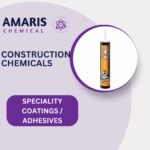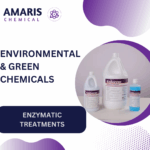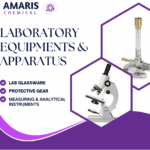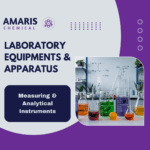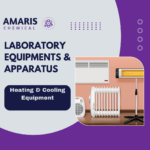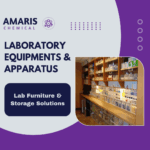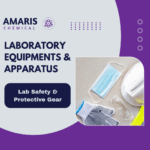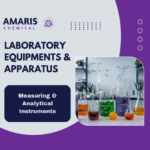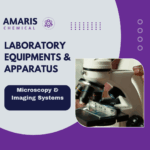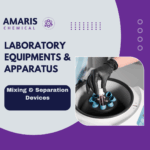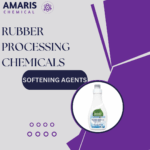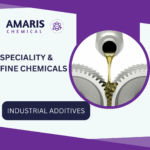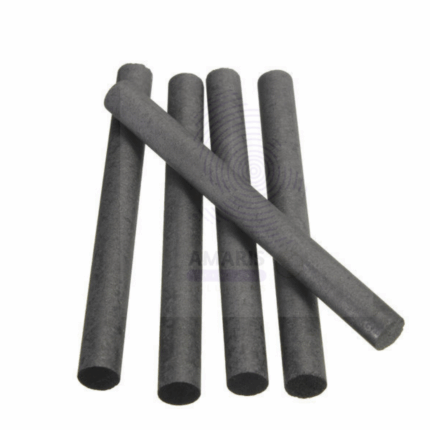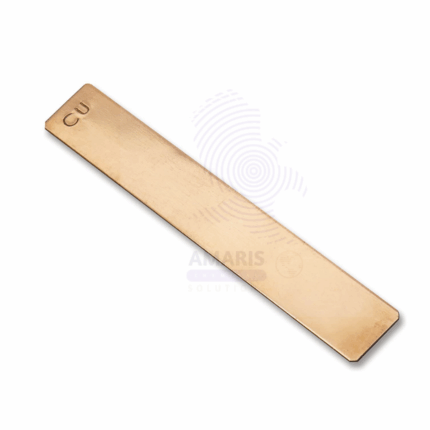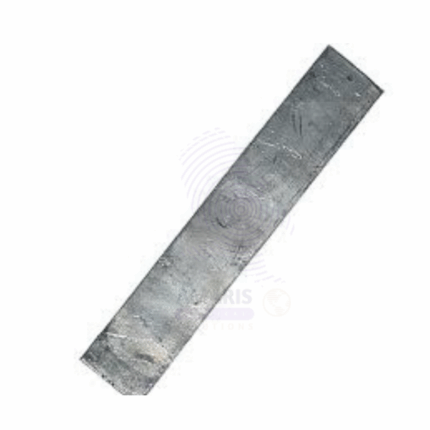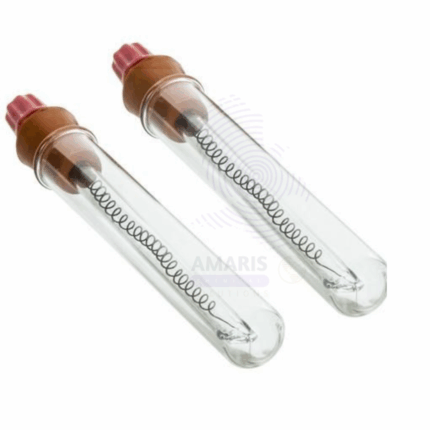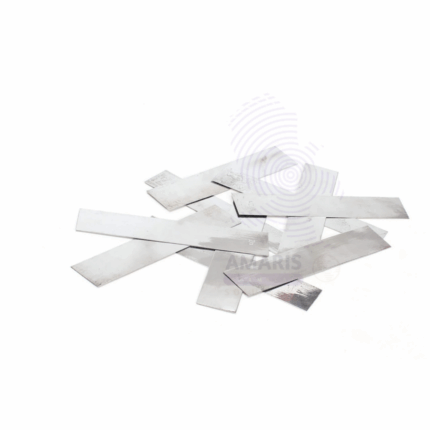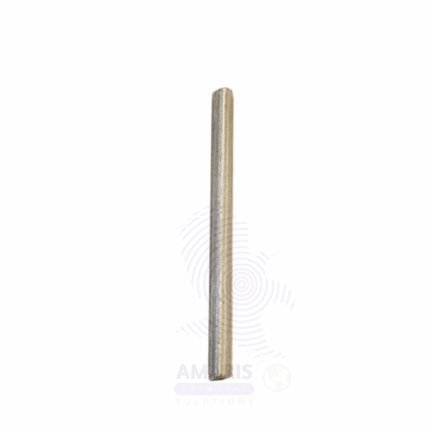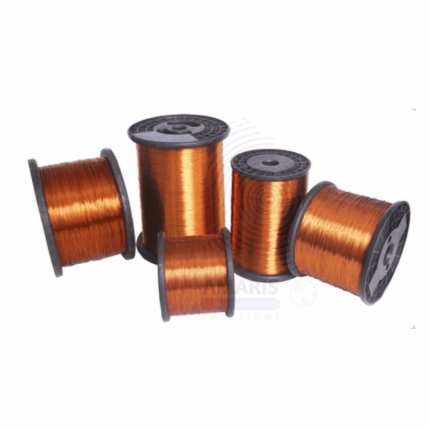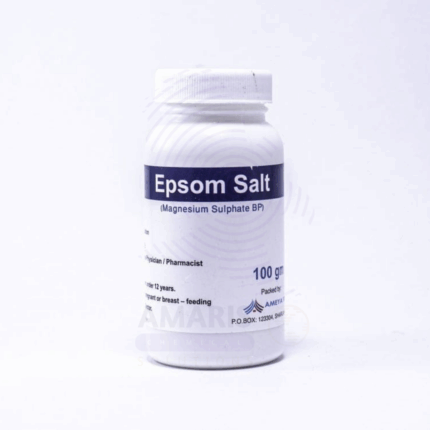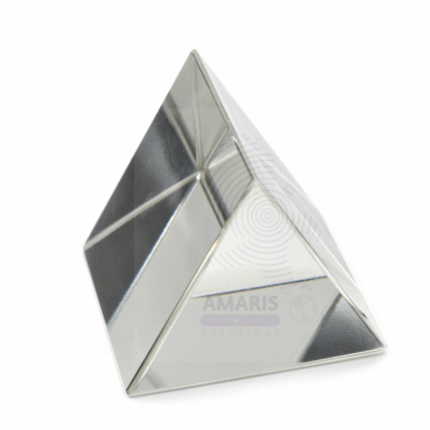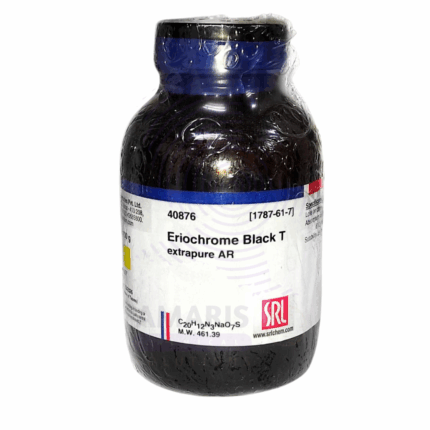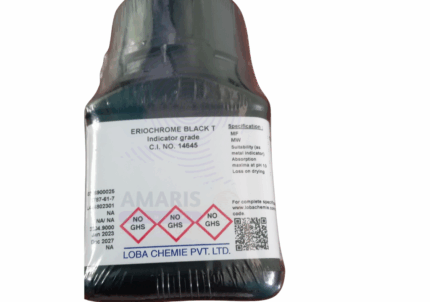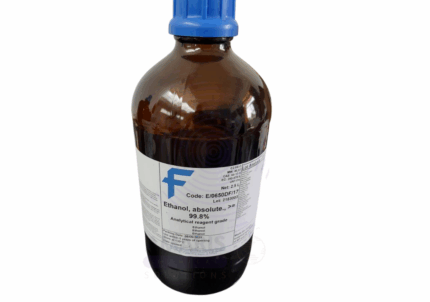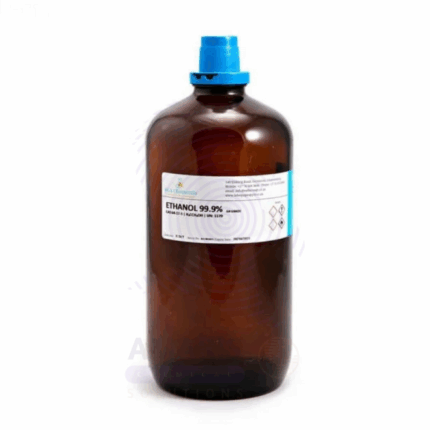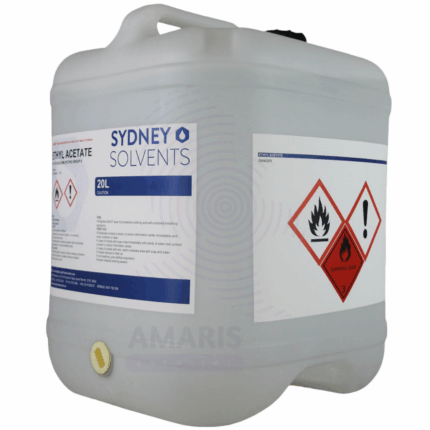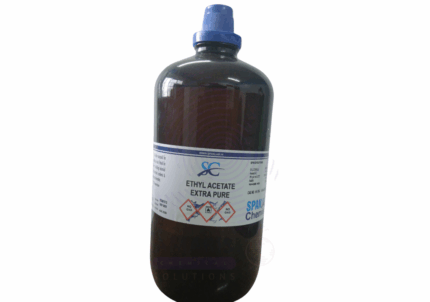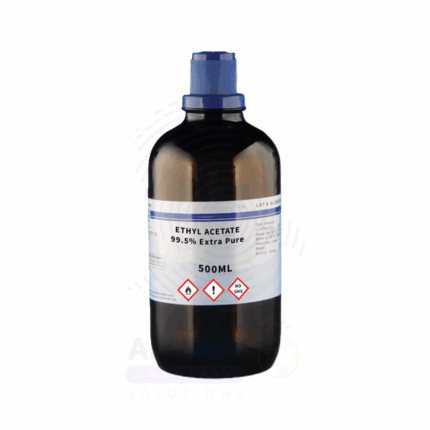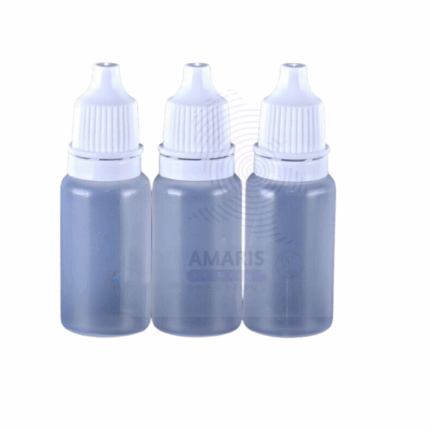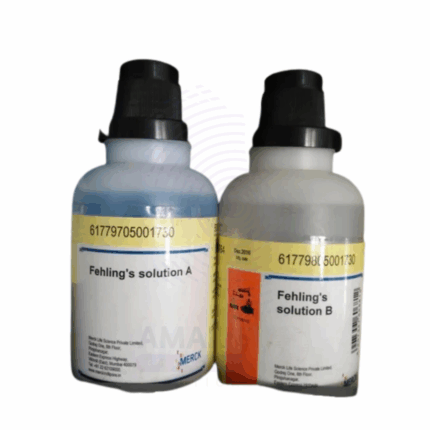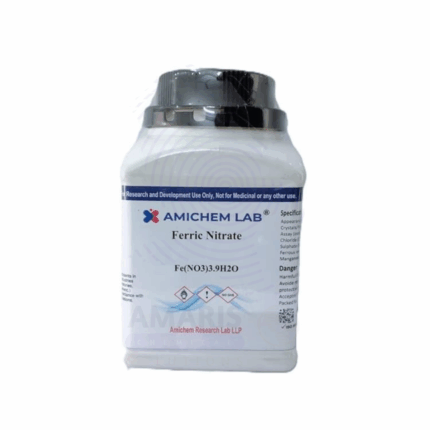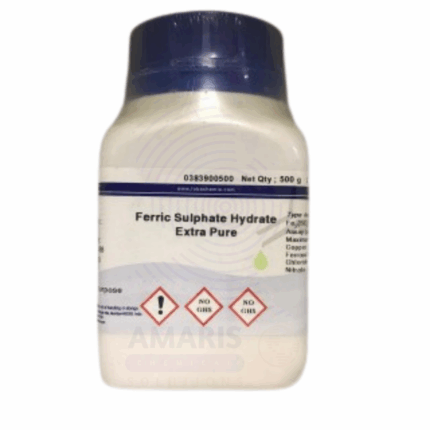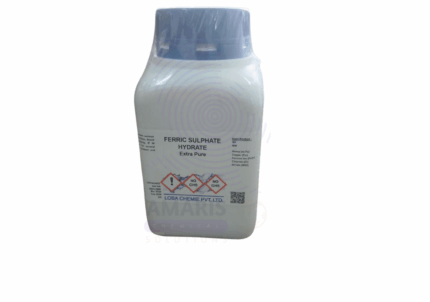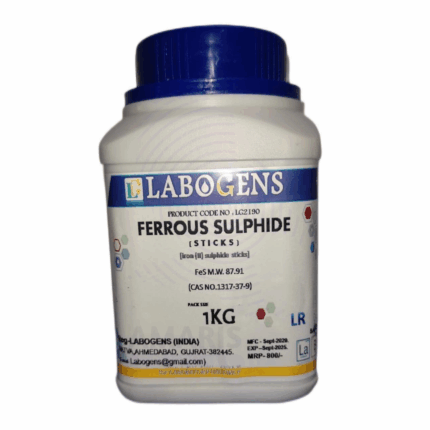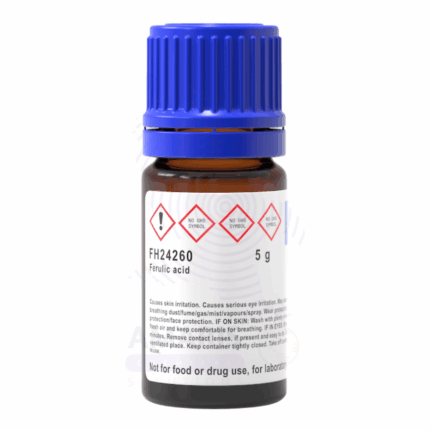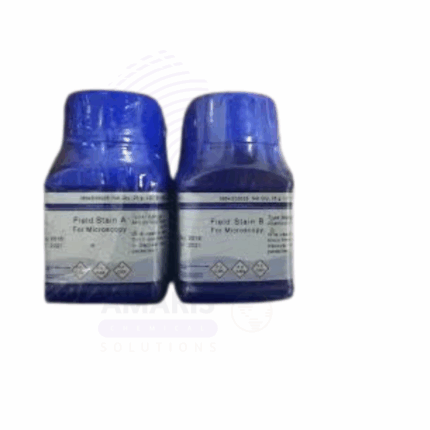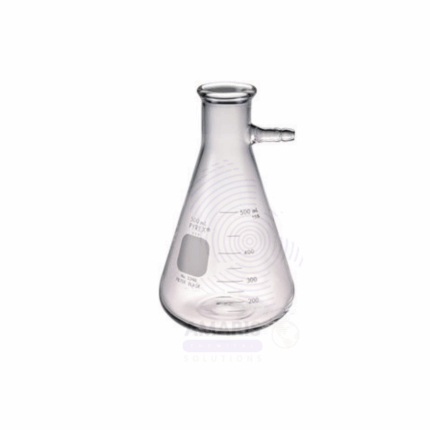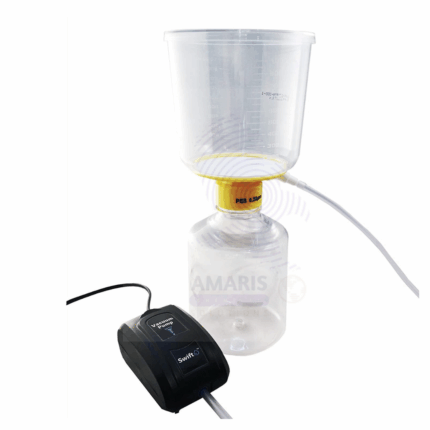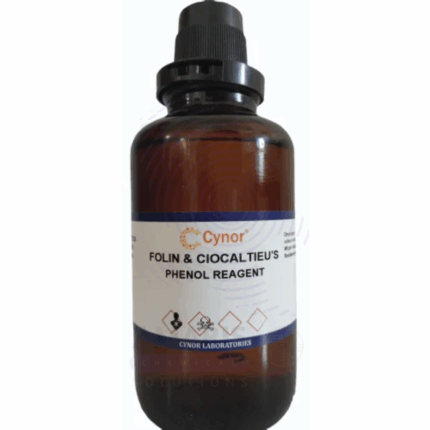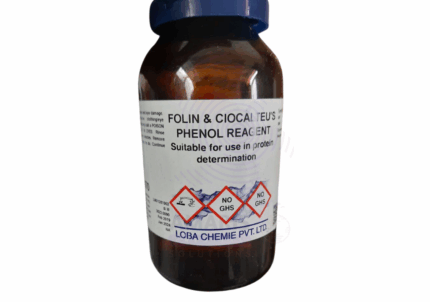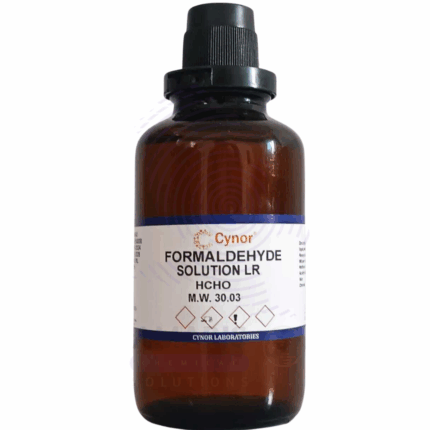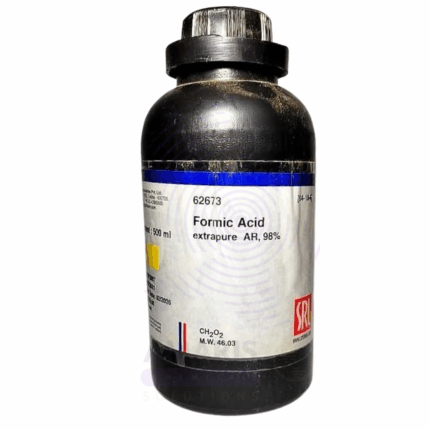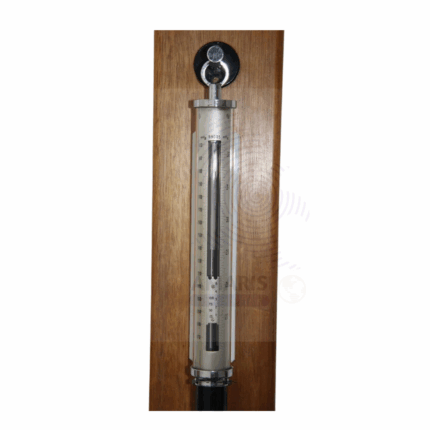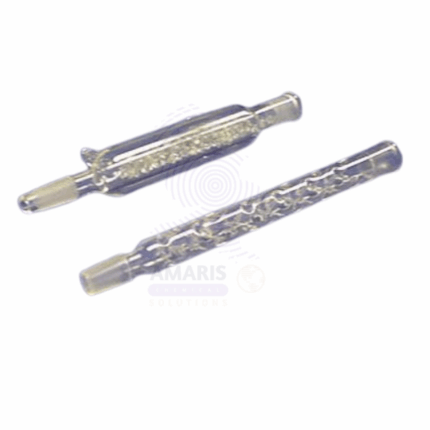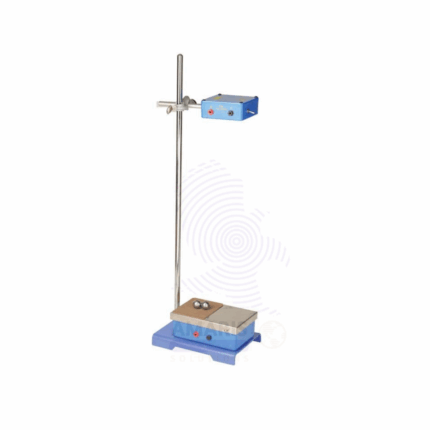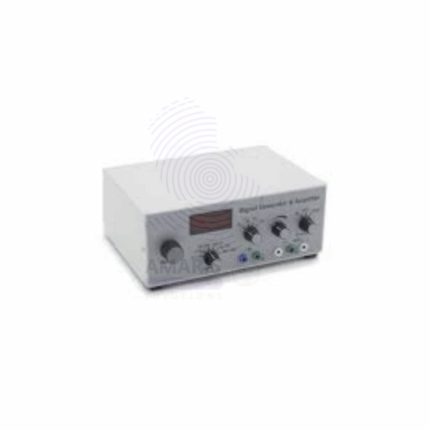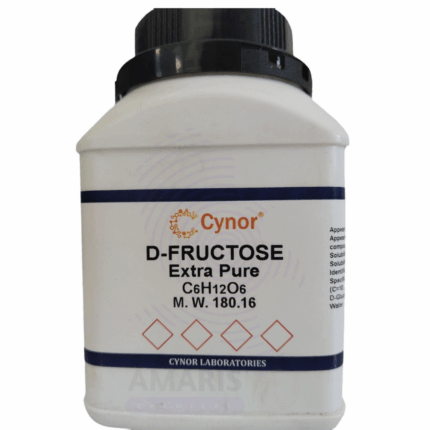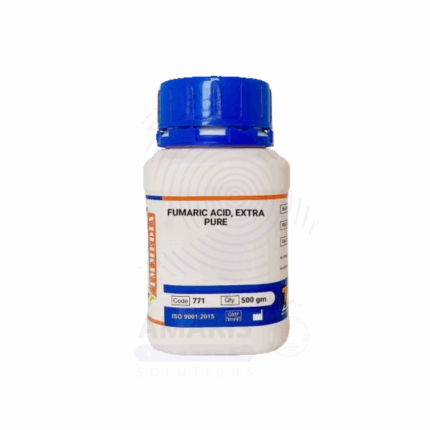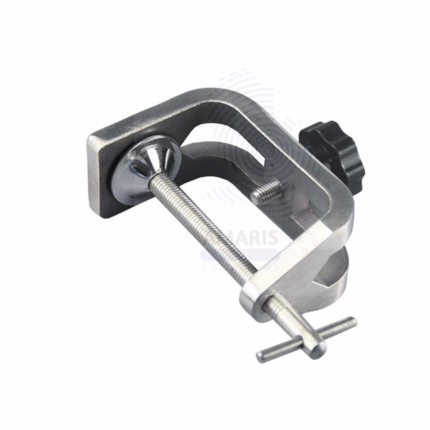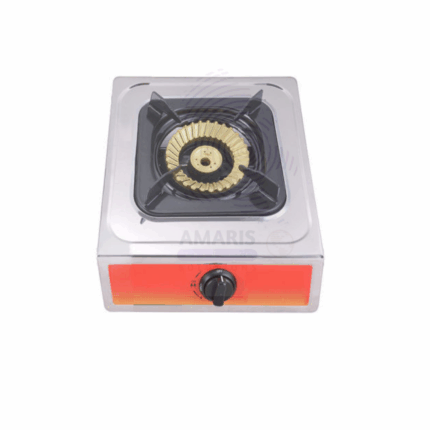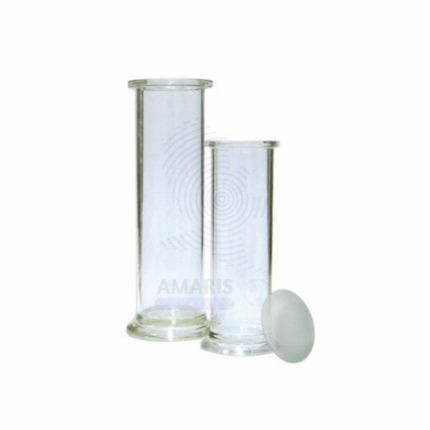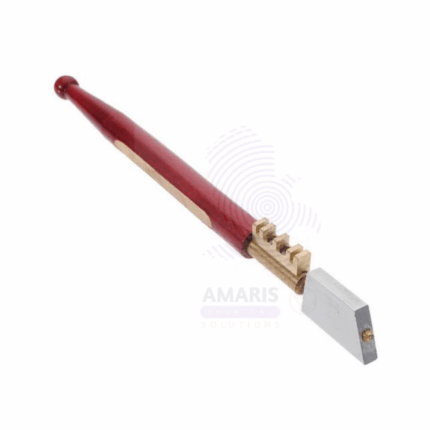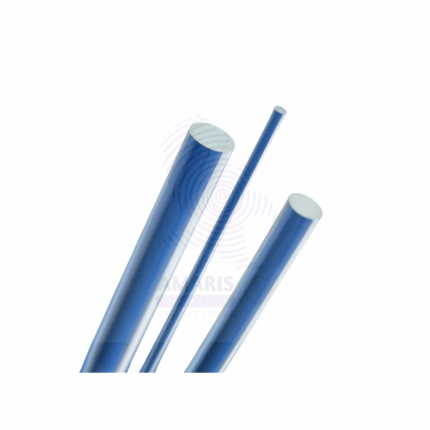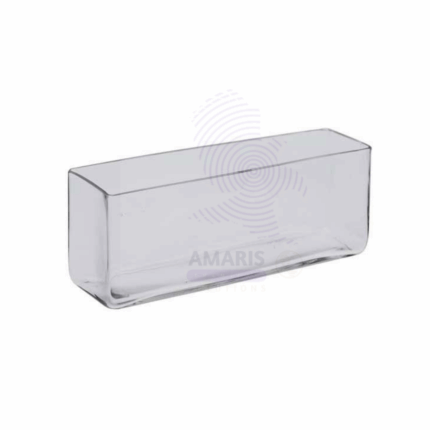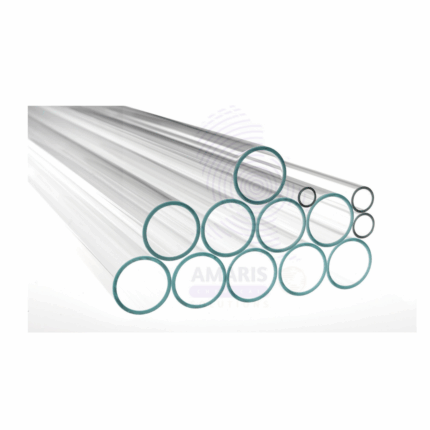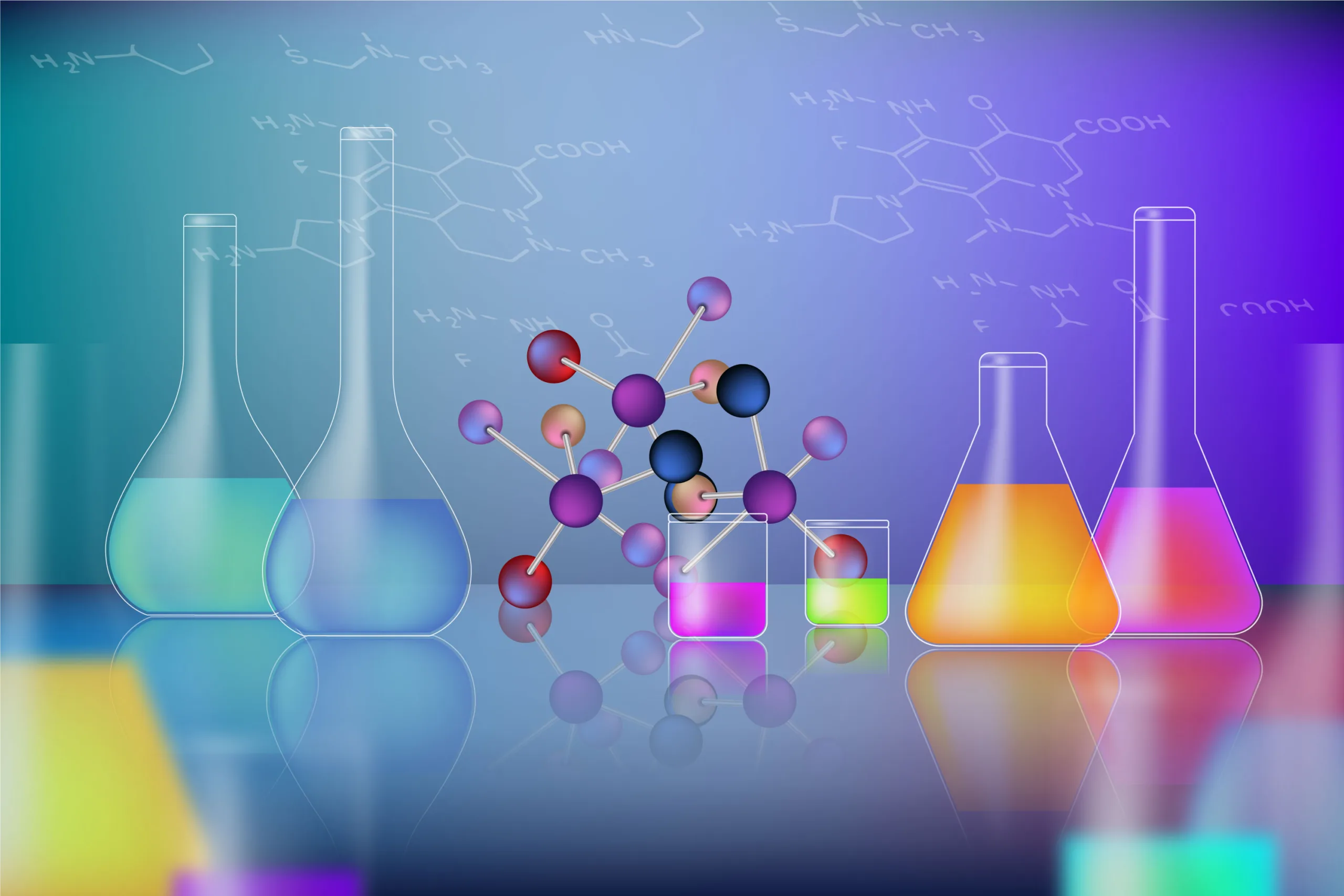
Electrode Carbon Rod
Electrode Carbon Rod is a high-purity carbon rod designed for use as an electrode in various electrical, industrial, and laboratory applications. Manufactured from graphite or carbon composites, these rods offer excellent electrical conductivity, chemical inertness, and thermal stability. They are commonly used in electrochemical cells, arc welding, battery manufacturing, and analytical instruments. The rods are precision-made to ensure uniform size and surface quality, enabling reliable performance in harsh environments involving high temperatures and reactive substances.
Electrode Copper Plate
Electrode Copper Plate is a high-purity copper sheet designed for use as an electrode in various electrical, electrochemical, and industrial applications. Known for its excellent electrical conductivity, thermal stability, and corrosion resistance, copper plates serve as reliable electrodes in electroplating, battery manufacturing, and electrical circuitry. These plates are manufactured with precise thickness and smooth surfaces to ensure efficient current flow and optimal performance. Copper electrodes are widely used in laboratories, manufacturing plants, and industrial processes that require durable and efficient electrical conductors.
Electrode Copper Rod
Electrode Copper Rod is a high-purity copper rod used primarily as an electrode in various electrical, electrochemical, and industrial applications. Known for its superior electrical conductivity, thermal stability, and corrosion resistance, copper rods are essential components in electroplating, battery manufacturing, welding, and electrical circuitry. Manufactured to precise dimensions with smooth surfaces, these rods ensure efficient current transmission and durability under demanding conditions. They are widely utilized in laboratories, manufacturing industries, and research facilities requiring reliable conductive electrodes.
Electrode Lead Plate
Electrode Lead Plate is a high-purity lead sheet designed for use as an electrode in various electrical and electrochemical applications, including batteries and electroplating processes. Lead plates exhibit good corrosion resistance in acidic environments and offer reliable conductivity for efficient current flow. These plates are manufactured with precise thickness and smooth surfaces to ensure optimal performance in lead-acid batteries, industrial electrolysis, and laboratory experiments. Lead electrode plates are commonly used in energy storage systems, chemical manufacturing, and scientific research.
Electrode Platinum Pair
Electrode Platinum Pair consists of two high-purity platinum electrodes used in laboratory and industrial electrochemical applications. Renowned for their excellent chemical inertness, corrosion resistance, and superior electrical conductivity, platinum electrodes provide stable and reliable performance in harsh chemical environments. These electrodes are commonly employed in electrolysis, standard electrode potential measurements, and catalysis research. Typically designed as pairs, they facilitate accurate current flow and measurement in analytical and research settings, making them indispensable in pharmaceutical, environmental, and chemical laboratories.
Electrode Zinc Plate
Electrode Zinc Plate is a high-quality zinc metal sheet designed for use as an electrode in various electrochemical applications, including batteries, corrosion protection, and electroplating. Zinc plates offer good electrical conductivity and act as sacrificial anodes in cathodic protection systems to prevent corrosion of metal structures. Manufactured with uniform thickness and smooth surfaces, these plates are widely used in lead-acid batteries, galvanic cells, and industrial electrolysis. Zinc electrodes are essential components in chemical processing, environmental protection, and laboratory research.
Electrode Zinc Rod
Electrode Zinc Rod is a high-purity cylindrical zinc metal rod designed for use as an electrode in electrochemical cells, corrosion protection systems, and industrial electrolysis. Known for its excellent electrical conductivity and sacrificial anode properties, zinc rods protect metal structures from corrosion by preferentially oxidizing. These rods are widely used in laboratory experiments, galvanic cells, battery systems, and cathodic protection of pipelines and tanks. Manufactured with uniform diameter and smooth surface finish, Zinc Rods are reliable components in both research and industrial applications.
Enamelled Copper Round Winding Wire
Enamelled Copper Round Winding Wire is a high-quality copper conductor coated with a thin layer of insulating enamel. This enamel coating provides electrical insulation while maintaining excellent conductivity and mechanical flexibility. The wire is typically round in cross-section and is widely used for winding coils in electrical motors, transformers, inductors, and other electromagnetic devices. Its robust insulation and durability make it ideal for applications requiring efficient current flow and resistance to heat, moisture, and abrasion. Enamelled copper wire is essential in both industrial manufacturing and laboratory setups involving electromagnetism and electrical engineering.
Epsom Salts Magnesium Sulphate Extra Pure
Epsom Salts Magnesium Sulphate Extra Pure is a high-purity, crystalline compound widely used in laboratory settings as a source of magnesium ions and as a drying or stabilizing agent in various chemical reactions. It is particularly valuable in analytical chemistry, buffer preparation, and qualitative tests involving sulfate or magnesium detection. In biological and biochemical research, it is often used to prepare nutrient solutions and culture media. The extra pure grade ensures minimal contaminants, making it suitable for precision applications and sensitive experiments. It should be stored in a cool, dry place to maintain its crystalline structure and prevent moisture absorption.
Equilateral Prism Glass
Equilateral Prism Glass is an optical glass component shaped as a triangular prism with all three sides of equal length. It is used to refract, disperse, or reflect light beams in precise laboratory, educational, and industrial optics applications. Made from high-quality, optically clear glass, the prism offers excellent light transmission and minimal distortion. It is widely used in physics experiments, spectroscopy, and optical instrument calibration. The equilateral prism’s geometry allows it to bend light rays at specific angles, enabling the study of light properties such as dispersion and refraction.
Eriochrome Extra Pure
Eriochrome Extra Pure—typically referring to Eriochrome Black T—is a complexometric indicator primarily used in EDTA titrations to detect metal ions, especially calcium (Ca²⁺) and magnesium (Mg²⁺) in water hardness analysis. In its extra pure grade, this dye ensures sharp, precise endpoint detection by minimizing impurities that could cause background coloration or interferences in spectrophotometric or volumetric determinations. It functions by forming a wine-red complex with metal ions, which turns blue when the metal is sequestered by EDTA. Suitable for high-precision analytical chemistry, it should be stored away from light and moisture to preserve stability.
Ethanol Extra pure
Ethanol Extra pure Extra Pure is a highly purified grade of ethyl alcohol widely used in laboratory, pharmaceutical, cosmetic, and analytical applications. At 99.8% purity, it contains minimal water, making it ideal for dehydration reactions, chromatography, spectroscopy, and cleanroom procedures. It serves as a universal solvent, disinfectant, and intermediate in chemical synthesis. This extra pure grade ensures low impurity levels, making it suitable for precision scientific experiments and pharmaceutical formulations. It is volatile and flammable, so it should be stored tightly sealed, in a cool, well-ventilated area, away from ignition sources.
Ethyl Acetate
Ethyl Acetate is a clear, colorless, volatile organic solvent with a characteristic sweet, fruity odor reminiscent of pear drops. It is an ester formed by the condensation of ethanol and acetic acid. Known for its excellent solvency, low toxicity, and rapid evaporation rate, Ethyl Acetate is widely used as a solvent in coatings, adhesives, inks, pharmaceuticals, and chemical synthesis. It is miscible with most organic solvents and partially soluble in water. Ethyl Acetate offers high volatility, making it ideal for quick-drying formulations.
Ethyl Acetate Extra Pure
Ethyl Acetate Extra Pure is a high-purity solvent widely used in analytical laboratories, chromatography, and sample preparation due to its fast evaporation and low toxicity. In laboratory settings, it’s valued for extraction, purification, and reaction medium roles, especially in organic synthesis. Its low water content and consistent purity make it suitable for GC/HPLC applications, adhesive formulations, and residue analysis. It must be handled in well-ventilated areas, away from heat or flame, and stored in tightly sealed containers to maintain its stability and prevent contamination.
Evaporation Dish
Evaporation Dish is a shallow laboratory container typically made from chemically resistant materials such as porcelain, borosilicate glass, or metal. It is designed to hold liquids for evaporation processes where solvents are removed by heating, leaving behind solid residues or concentrated solutions. The dish provides a wide surface area to facilitate rapid evaporation and is widely used in chemical, pharmaceutical, and educational laboratories. Its durable construction allows it to withstand thermal stress and chemical exposure during repetitive heating and cooling cycles.
Expansion of Liquid Apparatus
Expansion of Liquid Apparatus is a laboratory device designed to measure the volumetric expansion of liquids when subjected to temperature changes. It consists of a graduated glass tube connected to a bulb containing the test liquid. As the liquid heats and expands, the change in volume is observed and recorded through the graduated scale. This apparatus is essential in physical chemistry and materials science for studying thermal expansion coefficients and understanding liquid behavior under varying thermal conditions. It is commonly made from chemically resistant borosilicate glass to withstand thermal stress and chemical exposure.
Eyedrop Dropper Bottle
Eyedrop Dropper Bottle is a small, precision container designed for dispensing liquids in controlled, small volumes, commonly used for medicinal eye drops, laboratory reagents, or cosmetic liquids. These bottles are usually made from chemically resistant plastic or glass and come equipped with a dropper cap or teat for accurate drop-by-drop delivery. The secure closure prevents contamination and leakage, making them ideal for medical, pharmaceutical, and laboratory applications. Their design ensures hygiene, ease of handling, and precise dosage control.
Fehling Solution 1 and 2 Extra Pure
Fehling Solution 1 and 2 Extra Pure are essential reagents in classical laboratory chemistry, particularly used for the qualitative detection of reducing sugars such as glucose.
- Fehling Solution 1 contains copper(II) sulfate, while
- Fehling Solution 2 contains an alkaline potassium sodium tartrate (Rochelle salt) solution.
Ferric Chloride Anhydrous Extra Pure
Ferric Chloride Anhydrous Extra Pure is a highly refined, moisture-free compound composed of iron and chlorine (FeCl₃). In laboratory settings, it is widely used as a reagent for detecting phenols and as an etching agent for metals, especially in printed circuit board (PCB) production. Its strong oxidizing properties also make it suitable for redox reactions, qualitative analysis, and inorganic synthesis. This extra pure grade ensures minimal impurities, making it ideal for precise and controlled chemical experiments.
Ferric Nitrate Extra Pure
Ferric Nitrate Extra Pure is a high-purity iron(III) salt (Fe(NO₃)₃) commonly used in analytical chemistry, inorganic synthesis, and qualitative analysis. In the lab, it serves as an oxidizing agent and a source of ferric ions in solution. It’s also employed in the preparation of coordination compounds, as a catalyst, and in various colorimetric tests. Its extra pure grade ensures low levels of contaminants, making it suitable for precision laboratory applications.
Ferric Sulphate Extra Pure
Ferric Sulphate Extra Pure is a high-grade iron(III) sulfate compound (Fe₂(SO₄)₃) widely used in laboratory settings for analytical and research purposes. It functions as an oxidizing agent and is employed in water analysis, pigment preparation, and chemical synthesis. Its high purity makes it ideal for experiments requiring minimal interference from impurities.
Ferrous Sulphide Extra Pure
Ferrous Sulphide Extra Pure is a high-purity, dark grey to black solid compound primarily used in laboratory demonstrations, especially for generating hydrogen sulphide (H₂S) gas when reacted with dilute acids. This reaction is a classic example in inorganic chemistry for studying gas evolution and the properties of sulfide compounds. Beyond educational uses, ferrous sulphide is also employed in analytical testing and in certain metallurgical and industrial processes where controlled sulfur introduction is required. Its high purity ensures minimal interference from impurities, making it ideal for precise scientific applications. The compound should be handled in a well-ventilated area and stored in tightly sealed containers to avoid moisture exposure and the release of toxic gases.
Ferulic Acid Extra Pure
Ferulic Acid Extra Pure is a high-grade organic compound widely valued for its potent antioxidant properties. Naturally found in the cell walls of plants such as rice, wheat, and oats, it plays a key role in protecting cells from oxidative stress by neutralizing free radicals. In laboratory and research settings, Ferulic Acid is frequently used in studies related to aging, skincare formulations, and UV protection, due to its ability to stabilize sensitive ingredients like vitamins C and E. Its high purity makes it especially suitable for pharmaceutical and cosmetic applications where consistency and efficacy are critical. This compound is also explored for its potential anti-inflammatory and antimicrobial benefits, further expanding its versatility across various scientific and industrial domains.
Field Stain A and B Extra Pure
Field Stain A and B Extra Pure are specially formulated biological stains used primarily in hematology and microbiology for rapid differential staining of blood smears and parasites, especially in field conditions. Field Stain A typically contains methylene blue and azure dyes dissolved in a phosphate buffer, which preferentially stains the nuclei and cytoplasm of white blood cells. Field Stain B, on the other hand, contains eosin and counterstains the red blood cells and other acidic cellular components. Together, these stains provide excellent contrast and clarity, making them ideal for identifying malarial parasites and conducting quick diagnostic assessments in low-resource or remote environments. Their extra pure quality ensures minimal contamination, consistent performance, and reliable results in both clinical and educational settings.
Filter Flask
Filter Flask is a specially designed laboratory glass vessel, typically made from chemically resistant borosilicate glass, featuring a thick-walled body and a side arm for connection to vacuum sources. It is used in vacuum filtration procedures to collect filtrates efficiently while providing durability and chemical resistance. The side arm allows attachment to vacuum pumps or aspirators to create suction, speeding up the filtration process. Filter flasks are essential in chemical, biological, and pharmaceutical labs for separating solids from liquids, clarifying solutions, and sample preparation.
Filter Paper Schleicher and Schuell
Filter Paper Schleicher and Schuell is a premium quality, high-performance cellulose-based filter paper manufactured by Schleicher and Schuell. It is specifically engineered to provide consistent pore size distribution, excellent wet strength, and chemical resistance suitable for demanding laboratory filtration tasks. This filter paper is widely used in analytical, chemical, biological, pharmaceutical, and environmental laboratories for the separation of solids from liquids. Its precise manufacturing standards ensure reliable retention efficiency and reproducibility in filtration results. Available in multiple grades tailored for quantitative, qualitative, and special filtration requirements, this filter paper is essential for sample clarification, particulate removal, and gravimetric analysis.
Filter Pump
Filter Pump is a laboratory device designed to create a vacuum using water or air flow to assist in filtration processes. Typically made from corrosion-resistant metal, plastic, or a combination of both, it operates by utilizing the Venturi effect to generate negative pressure. This suction power is ideal for accelerating vacuum filtration by drawing liquid through filter media quickly and efficiently. Filter pumps are commonly used in chemical, biological, environmental, and industrial laboratories where rapid and effective liquid-solid separation is required. They are a cost-effective and reliable alternative to mechanical vacuum pumps in many low-to-moderate vacuum applications.
Folin Ciocalteus Phenol Reagent Extra Pure
Folin Ciocalteus Phenol Reagent Extra Pure is a high-grade chemical solution widely used in analytical chemistry and biochemistry for the colorimetric determination of phenolic and polyphenolic compounds. It functions by reacting with phenol groups to produce a blue complex, the intensity of which is directly proportional to the concentration of phenols present in the sample. This makes it an essential reagent in food science for measuring antioxidant capacity and total phenolic content in fruits, vegetables, beverages, and plant extracts. Its extra pure formulation ensures precision, reproducibility, and minimal background interference, making it ideal for research, quality control, and advanced laboratory applications.
Force Pump
Force Pump is a mechanical device designed to transfer fluids by applying manual force through a piston or plunger mechanism. Unlike lift pumps that only raise liquids to limited heights, force pumps are capable of delivering fluids at higher pressures and over greater vertical distances. Constructed from corrosion-resistant metal or durable plastic, force pumps are widely used in educational demonstrations, physics experiments, and small-scale fluid transfer systems. This apparatus illustrates fundamental hydraulic principles and is essential in laboratories, training workshops, and prototype testing environments.
Formaldehyde (Formalin) Extra Pure
Formaldehyde (Formalin) Extra Pure is a highly concentrated and refined aqueous solution of formaldehyde gas, commonly used in laboratories, industrial processes, and research applications. Renowned for its potent disinfectant and preservative properties, it is widely employed in histology for tissue fixation, in microbiology for sterilization, and in various chemical syntheses as a versatile reagent and building block. Its extra pure grade ensures minimal impurities, making it suitable for sensitive analytical procedures, formulation work, and high-precision chemical reactions. This product must be handled with care due to its volatility and toxic nature, especially in enclosed environments.
Formic Acid Extra Pure
Formic Acid Extra Pure is a colorless, pungent-smelling liquid with exceptional purity, making it ideal for high-precision laboratory and industrial applications. It is the simplest carboxylic acid and serves as a key reagent in organic synthesis, chromatography, and chemical analysis. Its high acidity and reducing properties make it useful in textile dyeing, leather tanning, electroplating baths, and as a preservative in livestock feed. In the lab, it is also used to adjust pH in sensitive reactions and in protein and peptide analysis. The extra pure grade ensures minimal contamination, which is critical for research-grade and analytical procedures.
Fractionating Column
Fractionating Column is a laboratory apparatus used in distillation processes to separate liquid mixtures into their individual components based on differences in boiling points. It consists of a vertical glass or metal tube filled with packing material or internal trays that increase surface area, promoting repeated condensation and vaporization cycles (fractionation). This allows for more efficient separation of close-boiling compounds. Fractionating columns are commonly used in organic chemistry labs, chemical processing industries, and educational institutions. Their design can vary from simple glass tubes to complex industrial towers, but all serve the essential function of improving separation efficiency in distillation systems.
Free Fall Apparatus
Free Fall Apparatus is an educational laboratory instrument designed to study the motion of freely falling objects under the influence of gravity. It typically consists of a vertical support stand, electromagnetic release mechanism, timing sensor or stopwatch interface, and a catching tray or cushioning base. When an object is released from rest, the apparatus records the time it takes to fall a known distance, allowing for precise calculations of acceleration due to gravity (g). Commonly used in physics laboratories, educational institutions, and research settings, the Free Fall Apparatus enables hands-on learning of Newtonian mechanics, kinematics, and motion analysis.
Frequency and Signal Generator
Frequency and Signal Generator is a precision electronic instrument used to generate electrical signals of varying frequencies, waveforms, and amplitudes for testing, designing, and troubleshooting electronic devices and systems. It typically produces sine, square, triangle, and other waveform signals with adjustable frequency and output levels. Widely used in laboratories, research and development, educational institutions, and industrial testing environments, this device helps in analyzing circuit behavior, calibrating equipment, and simulating signals for communication, audio, and control systems.
Fructose Extra Pure
Fructose Extra Pure is a high-purity, naturally occurring monosaccharide renowned for its intense sweetness and excellent solubility. Widely used in laboratory research, food analysis, and pharmaceutical formulations, it serves as a key carbohydrate reference and energy source in various biochemical applications. Its high reactivity and compatibility with a range of analytical techniques make it ideal for testing and formulation development in nutritional science, fermentation processes, and metabolic studies. The extra pure grade ensures minimal interference from impurities, making it suitable for precision-sensitive environments.
Fumaric Acid Extra Pure
Fumaric Acid Extra Pure is a white crystalline organic compound known for its use as a food acidulant, a chemical intermediate, and a reagent in laboratory analysis. This trans-isomer of butenedioic acid plays a significant role in the Krebs cycle and is commonly used in biochemical and pharmaceutical research. In laboratories, it serves as a standard for titrations and a pH modifier in formulations. Its excellent stability, solubility in alcohol, and high purity make it suitable for precision applications, including quality control testing, analytical chemistry, and synthesis of esters and resins.
Galvanometer Zero Center
Galvanometer Zero Center is a precision instrument used to detect and measure small electric currents by deflecting a needle from a zero center position. Designed with a symmetrical scale balanced around the zero point, it enables accurate detection of current direction and magnitude. Constructed with sensitive coils and magnetic systems, this galvanometer is widely used in physics laboratories, electrical testing, and instrumentation for experiments requiring precise current measurement and analysis.
Gas Burner Portable
Gas Burner Portable is a compact, lightweight burner designed specifically for laboratory and field applications requiring a reliable heat source. Typically fueled by LPG or butane gas, it provides a clean, adjustable flame suitable for heating, sterilization, and combustion tasks. Constructed from durable materials with heat-resistant finishes, this burner features safety valves and flame controls for precise operation. Its portability allows for easy transport and use in diverse environments, including classrooms, research sites, and outdoor experiments.
Gas Cartridge
Gas Cartridge is a small, portable container designed to store and supply compressed fuel gases such as butane, propane, or a mix of gases for use in portable burners, camping stoves, soldering tools, and other gas-powered devices. These cartridges are engineered to provide a reliable, controlled gas flow with built-in safety features like pressure release valves and secure screw-on or snap-on fittings. Their compact size and lightweight design make them ideal for outdoor activities, laboratory use, and emergency heating applications. Made from durable metal, gas cartridges ensure safe storage and transport of fuel under pressure.
Gas Jar Lid
Gas Jar Lid is a specially designed cover used to securely seal gas jars, which are containers used to collect, hold, or measure gases in laboratory experiments. Typically made from chemically resistant materials such as glass or plastic, the gas jar lid ensures a tight seal to prevent gas leakage during chemical reactions, gas collection, or storage. It often features one or more ports or holes to allow insertion of tubes, thermometers, or gas delivery apparatus, facilitating controlled gas flow and measurement. Gas jar lids are essential for safe and efficient gas handling in scientific research and educational laboratories.
Gas Jar with Lid
Gas Jar with Lid is a durable, chemically resistant container designed for the collection, storage, and measurement of gases in laboratory settings. Typically made from high-quality borosilicate glass or plastic, the gas jar comes with a tight-fitting lid—often equipped with ports or holes—to ensure an airtight seal and facilitate gas transfer or measurement. This apparatus is essential for conducting gas collection experiments safely and accurately, preventing contamination and gas loss. Widely used in educational, research, and industrial laboratories, gas jars with lids enable efficient handling of gases such as oxygen, hydrogen, carbon dioxide, and other experimental gases.
Glass Cutter Diamond Pencil
Glass Cutter Diamond Pencil is a precision tool designed for scoring and cutting glass sheets and laboratory glassware. It features a durable diamond-tipped cutting edge that enables smooth, clean cuts on various types of glass including tempered, stained, and borosilicate glass. The pencil-style ergonomic design provides comfortable grip and control for detailed work. This tool is widely used by glassworkers, laboratory technicians, artisans, and DIY enthusiasts for shaping and customizing glass components without causing cracks or unwanted breakage. The diamond tip ensures extended durability and consistent performance, making it an essential instrument for both industrial and laboratory glass cutting tasks.
Glass Rod for Static Electricity
Glass Rod for Static Electricity is a smooth, cylindrical rod made from high-quality glass designed specifically for generating static electricity through friction. Commonly used in physics laboratories and educational demonstrations, this rod serves as a fundamental tool to study electrostatics by producing and transferring electric charges when rubbed with materials like silk or wool. The rod’s chemically resistant, durable glass surface allows repeated use without degradation. It is an essential apparatus for teaching concepts such as charge generation, attraction, repulsion, and the behavior of static electricity in various materials.
Glass Stirring Rod
Glass Stirring Rod is a durable, chemically resistant cylindrical rod made from borosilicate glass, designed for mixing, stirring, and blending liquids in laboratory and industrial settings. Its smooth, inert surface ensures no reaction or contamination with chemicals, making it ideal for handling acids, bases, and organic solvents. The rod is heat resistant and easy to clean, providing a reliable tool for consistent and efficient stirring during experiments, chemical reactions, or sample preparation. Glass Stirring Rods are essential in research, quality control, pharmaceutical, and educational laboratories for accurate and safe fluid mixing.
Glass Trough
Glass Trough is a sturdy, open-top container made from chemically resistant borosilicate glass, designed for use in laboratory experiments and fluid handling applications. Its transparent walls provide excellent visibility of contents, while the smooth surface resists chemical attack and allows easy cleaning. Glass Troughs are commonly used for holding liquids, conducting water displacement experiments, or as reservoirs in various scientific setups. Durable and reusable, they are essential laboratory tools in research, education, and industrial testing environments.
Glass Tubing
Glass Tubing is a cylindrical, hollow glass product commonly made from chemically resistant borosilicate glass, designed for a wide range of laboratory, industrial, and scientific applications. It provides a durable, transparent conduit for transporting gases, liquids, and chemicals. Glass tubing is valued for its excellent chemical inertness, thermal resistance, and clarity, making it ideal for use in experimental setups, fluid transfer systems, and glass apparatus fabrication. Available in various diameters and wall thicknesses, glass tubing can be cut, bent, or shaped to suit specific requirements.
Glass Tubing Cutter File
Glass Tubing Cutter File is a specialized tool designed for scoring and preparing glass tubes before breaking them cleanly. It typically features a hardened steel or diamond-coated cutting surface combined with a file mechanism to smooth and shape the scored area, ensuring precise and controlled glass cutting. This tool is essential for laboratory technicians, glassworkers, and craftsmen who work with glass tubing, enabling safe and accurate customization of glass lengths and shapes.
Glass Tubing Cutter Wheel Type
Glass Tubing Cutter Wheel Type is a precision cutting tool designed specifically for scoring and cutting glass tubes and rods. It features a sharp, durable cutting wheel mounted on an adjustable frame that allows for smooth, clean cuts with minimal effort. The tool is essential for laboratory, industrial, and craft applications where accurate glass tubing modification is required. Its ergonomic design ensures controlled handling and consistent performance, making it a reliable accessory for glassware preparation and repairs.


 Preservatives(food)
Preservatives(food) Flavor Enhancers
Flavor Enhancers Acidulants
Acidulants Sweeteners
Sweeteners Antioxidants
Antioxidants Colorants(food)
Colorants(food) Nutraceutical Ingredients (food)
Nutraceutical Ingredients (food) Nutrient Supplements
Nutrient Supplements Emulsifiers
Emulsifiers
 Collectors
Collectors Dust Suppressants
Dust Suppressants Explosives and Blasting Agents
Explosives and Blasting Agents Flocculants and Coagulants
Flocculants and Coagulants Frothers
Frothers Leaching Agents
Leaching Agents pH Modifiers
pH Modifiers Precious Metal Extraction Agents
Precious Metal Extraction Agents
 Antioxidants(plastic)
Antioxidants(plastic) Colorants (Pigments, Dyes)
Colorants (Pigments, Dyes) Fillers and Reinforcements
Fillers and Reinforcements Flame Retardants
Flame Retardants Monomers
Monomers Plasticizers
Plasticizers Polymerization Initiators
Polymerization Initiators Stabilizers (UV, Heat)
Stabilizers (UV, Heat)
 Antifoaming Agents
Antifoaming Agents Chelating Agents
Chelating Agents Coagulants and Flocculants
Coagulants and Flocculants Corrosion Inhibitors
Corrosion Inhibitors Disinfectants and Biocides
Disinfectants and Biocides Oxidizing Agents
Oxidizing Agents pH Adjusters
pH Adjusters Scale Inhibitors( water)
Scale Inhibitors( water)
 Antioxidants(cosmetic)
Antioxidants(cosmetic) Emollients
Emollients Fragrances and Essential Oils
Fragrances and Essential Oils Humectants
Humectants Preservatives
Preservatives Surfactants(cosmetic)
Surfactants(cosmetic) Thickeners
Thickeners UV Filters
UV Filters
 Fertilizers
Fertilizers Soil Conditioners
Soil Conditioners Plant Growth Regulators
Plant Growth Regulators Animal Feed Additives
Animal Feed Additives Biostimulants
Biostimulants Pesticides (Herbicides, Insecticides, Fungicides)
Pesticides (Herbicides, Insecticides, Fungicides)
 Active Pharmaceutical Ingredients (APIs)
Active Pharmaceutical Ingredients (APIs) Excipients
Excipients Solvents(pharmaceutical)
Solvents(pharmaceutical) Antibiotics
Antibiotics Antiseptics and Disinfectants
Antiseptics and Disinfectants Vaccine Adjuvants
Vaccine Adjuvants Nutraceutical Ingredients (pharmaceutical)
Nutraceutical Ingredients (pharmaceutical) Analgesics & Antipyretics
Analgesics & Antipyretics
 Analytical Reagents
Analytical Reagents Solvents(lab)
Solvents(lab) Chromatography Chemicals
Chromatography Chemicals Spectroscopy Reagents
Spectroscopy Reagents microbiology-and-cell-culture-reagents
microbiology-and-cell-culture-reagents Molecular Biology Reagents
Molecular Biology Reagents Biochemical Reagents
Biochemical Reagents Inorganic and Organic Standards
Inorganic and Organic Standards Laboratory Safety Chemicals
Laboratory Safety Chemicals Specialty Laboratory Chemicals(Special Laboratory Equipment)
Specialty Laboratory Chemicals(Special Laboratory Equipment)
 Demulsifiers
Demulsifiers Hydraulic Fracturing Fluids
Hydraulic Fracturing Fluids Scale Inhibitors(oil)
Scale Inhibitors(oil) Surfactants(oil)
Surfactants(oil) Drilling Fluids
Drilling Fluids
 Dyes and Pigments
Dyes and Pigments Bleaching Agents
Bleaching Agents Softening Agents
Softening Agents Finishing Agents
Finishing Agents Antistatic Agents
Antistatic Agents
 Admixtures
Admixtures Waterproofing Agents
Waterproofing Agents Sealants and Adhesives
Sealants and Adhesives Curing Compounds
Curing Compounds Concrete Repair Chemicals
Concrete Repair Chemicals Anti-Corrosion Coatings
Anti-Corrosion Coatings
 Surfactants(cleaning)
Surfactants(cleaning) Builders
Builders Enzymes
Enzymes Solvents (Cleaning)
Solvents (Cleaning) Fragrances
Fragrances
 Electronic Chemicals
Electronic Chemicals Catalysts
Catalysts Lubricants
Lubricants Photographic Chemicals
Photographic Chemicals Refrigerants
Refrigerants Automotive chemicals
Automotive chemicals Pyrotechnic Chemicals
Pyrotechnic Chemicals
 Biodegradable Surfactants
Biodegradable Surfactants Bio-based Solvents
Bio-based Solvents Renewable Polymers
Renewable Polymers Carbon Capture Chemicals
Carbon Capture Chemicals Wastewater Treatment Chemicals
Wastewater Treatment Chemicals
 Pigments
Pigments Solvents(paint)
Solvents(paint) Specialty Coatings
Specialty Coatings Binders/Resins
Binders/Resins Additives
Additives Driers
Driers Anti-Corrosion Agents
Anti-Corrosion Agents Functional Coatings
Functional Coatings Application-Specific Coatings
Application-Specific Coatings
 Fresh Herbs
Fresh Herbs Ground Spices
Ground Spices Whole Spices
Whole Spices Spice Blends
Spice Blends Dried Herbs
Dried Herbs
 Leavening Agents
Leavening Agents Dough Conditioners
Dough Conditioners Flour Treatments
Flour Treatments Fat Replacers
Fat Replacers Decoratives
Decoratives Preservatives(baking)
Preservatives(baking)
 Plasticizers & Softeners
Plasticizers & Softeners Reinforcing Agents
Reinforcing Agents Adhesion Promoters
Adhesion Promoters Vulcanizing Agents
Vulcanizing Agents Antidegradants
Antidegradants Blowing Agents
Blowing Agents Fillers & Extenders
Fillers & Extenders Accelerators & Retarders
Accelerators & Retarders
